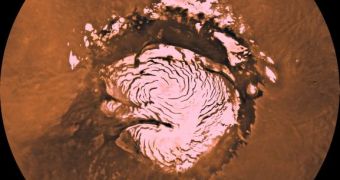Google seems to be totally into our neighboring planet, as evidenced by the fact that only yesterday it introduced a new add-on to Google Earth 5.0, in which new images of the Red Planet were added, as well as a “Live From Mars” layer, that contains the latest images beamed back by the NASA-operated Mars Odyssey orbiter. The new software includes numerous historical images of the planet, as well as guided tours to some of its most controversial and intriguing features, narrated by National Public Radio (NPR)'s Ira Flatow and Bill Nye the Science Guy.
“Our hope is that Mars becomes more than just a public science demonstration program. We're hoping that NASA and other scientists use it as a primary distribution mechanism for communicating science to the public and to each other,” said Google software engineer Michael Weiss-Malik, who played a major role in the development of the upgrade that was introduced on March 13.
It would indeed seem that there is a new breeze of science excitement blowing on the Internet, and in the lives of more and more people worldwide. Google's products come to complete an extending array of pieces of software that bring exploring the Universe, galaxies, the solar system and the Earth closer to everyday computer users. The Microsoft WorldWide Telescope already collects data from most sky surveys ever made, in all wavelengths. NASA's SkyView Observatory has already been operational for quite some time now, and an increasing number of people log in every day to scout certain portions of the sky.
What is even greater about these platforms is that they have the ability to be constantly enhanced, meaning that all new studies and observations that will be made, with Hubble, Fermi or Chandra, Spirit, Opportunity or MRO, the New Horizons, Cassini and Dawn space probes, as well as other observatories deep underground or pointed at the skies, will immediately be incorporated within these pieces of software.
This information is in the public domain, so collaborations between Google, Microsoft and NASA, ESA, JAXA and all the other space agencies and universities involved in space exploration in the world could bring the most detailed knowledge of our galactic surroundings to average people just days or weeks after the discoveries are made and processed.

 14 DAY TRIAL //
14 DAY TRIAL //